The best varieties of stalked celery: "Pascal", "Atlant", "Utah" and others
The stalks are the most vitamin-rich part of celery, but in leafy and root vegetables they are small, fibrous and overly spicy, therefore they are only suitable as a spice. For the sake of juicy stems, stalked celery is grown. To understand what determines the taste of a vegetable, and to choose the optimal plants for local climatic conditions, consider the best varieties of this type.
The content of the article
Varieties of varieties of stalked celery
Several centuries ago, celery stalks were used only for medicinal purposes.... Over time, the plant became a popular spice and vegetable crop and was included in the list of the healthiest foods.
Stalked celery is grown for the juicy spicy stems... They are versatile in use and are high in vitamins and minerals. Plants have a long growing season (70-180 days), therefore, in cold regions, the culture is planted only in seedlings.
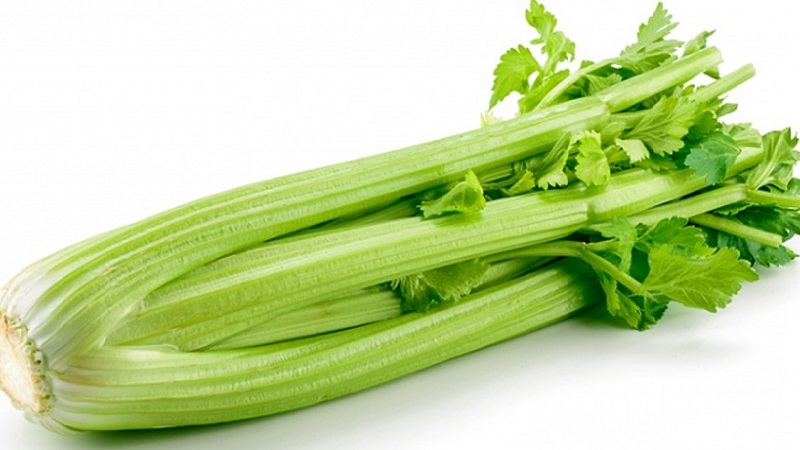
According to the ripening period, the varieties are divided into:
- early;
- mid-season;
- late.
Celery with any ripening period is suitable for the south and middle lane.... In the climatic conditions of Siberia and the Urals, plants with an early and medium maturity are planted. Late ripening crops are grown only in greenhouses.
Celery stalks come in different colors.: pinkish and dark red, green and almost white. White petioles have a high culinary value. They have a mild aroma and sweetish taste without bitterness.
Important! 2 weeks before full ripeness, the colored stems are specially bleached: they are wrapped in any dense material that allows air to pass through, and allowed to ripen.
Special microclimate and lack of light improve taste and aroma... According to the cultivation technology, depending on the color of the stems, petiolate species are divided into 2 groups:
- green and red varieties that additionally bleach;
- self-bleaching varieties that do not need bleaching.
Stalked celery seeds keep well, and their germination only increases with time.
Interesting on the site:
Celery: what it tastes like, what it looks like and how to use it
The best green varieties
Such plants are high-yielding and adapted to different climatic conditions, unpretentious, tolerate drought and cold well... To improve the taste of the petioles, remove excessive bitterness and pungent odor, the stems of these varieties are bleached at the stage of technical ripeness.
Pascal
A mid-season cold-resistant variety ripens within 150 days... Suitable for greenhouses and open ground. It is recommended to grow it in seedlings. Pascal stalked celery is sown at the end of March, seedlings with 5-6 leaves are planted in the ground in early May.
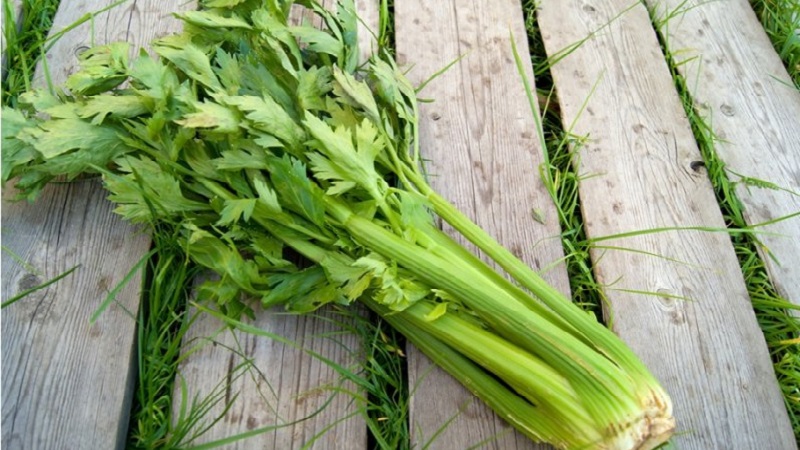
A mature plant has an erect rosette that forms up to 20 stems and weighs about 450 g... The petioles are light green, slightly ribbed, grow up to 25 cm, the width of each at the base is 4 cm. The leaves are dark with a slight gloss. 3-4 kg of petioles are collected from 1 m².
Atlant
it mid-season variety with a ripening period of 150-170 days... Grows best in greenhouses. Seeds for seedlings are sown from mid-March, planted in the ground by early June.
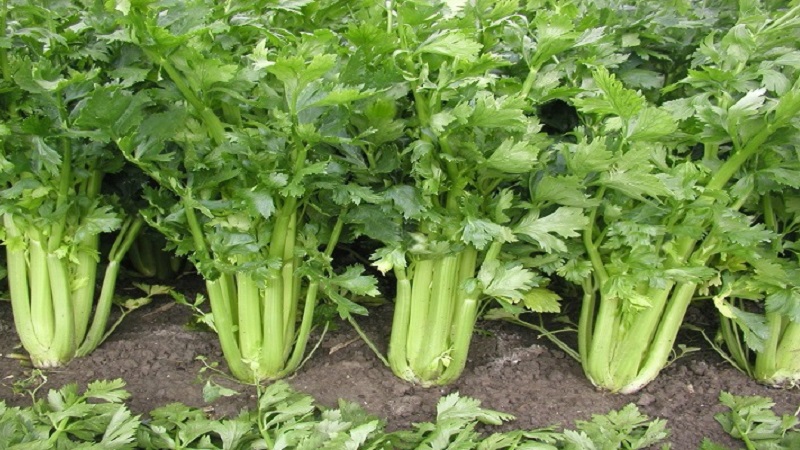
A plant with a straight rosette with a diameter of about 50 cm and a weight of 300-400 g has a rich aroma... Petioles are bright green with light ribbing, 40–45 cm high. Leaves are medium-sized with a strong gloss. Average yield from 1 m² is 3 kg.
Attention! According to experienced vegetable growers, it is better to sow Atlanta seeds without deepening.
Male prowess
An early ripening variety with a ripening period of 150-165 days is unpretentious, grows well in greenhouses. Seeds are sown in the first decade of March, transplanted into the ground by the end of May.
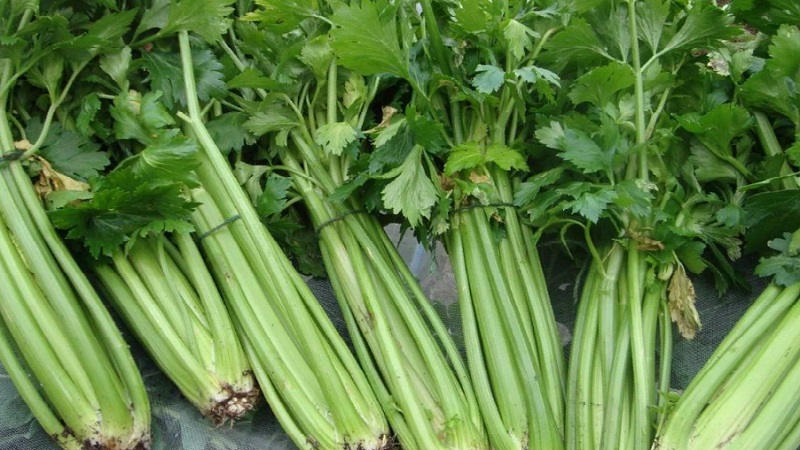
The plant has a powerful straight rosette consisting of 15 tightly closed stems... The petioles are rounded, smooth, even, weighing up to 650 g and up to 55 cm long, painted in a light green color. The leaves are glossy. The culture stands out for its good germination and juicy petioles with a tart aroma. The yield reaches 4 kg per 1 m².
Triumph
Variety with an average ripeness - ripens within 130 days... Suitable for open field, greenhouses and home growing. Seeds are sown in mid-March, and seedlings are transplanted into the beds in the last decade of May.
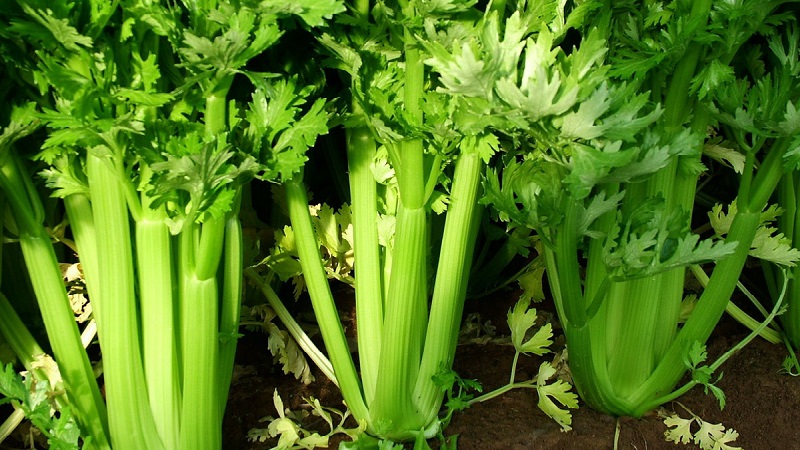
The plant has a neat rosette with fleshy emerald petioles up to 30 cm tall, strong aroma and bright sourness in taste. Productivity from 1 m² is about 3 kg.
Crunch
Mid-season variety that ripens in 120 days, resistant to cold... It is planted in greenhouses and open beds. Seeds are sown in early March, transplanted into the ground in mid-May.
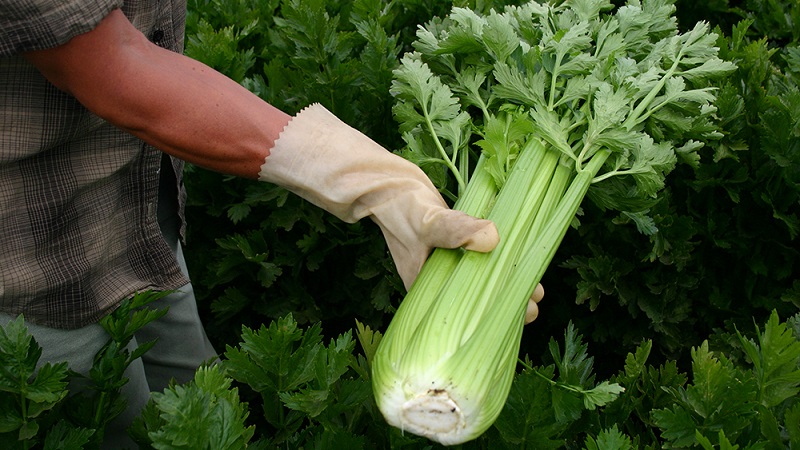
Small plant with a vertical bushy rosette up to 30 cm in diameter... Dark green petioles are resilient, fleshy, with a ribbed surface, grow up to 45 cm. Up to 3 kg of greens are harvested from 1 m². Crunch has a mild sweetish aroma and a neutral taste.
Utah
This is the most delicious celery of all green varieties.... It belongs to the mid-ripening period: it ripens within 170-180 days. More suitable for greenhouses. The seeds are sown at the end of February, the seedlings are transplanted into the ground by the end of May.
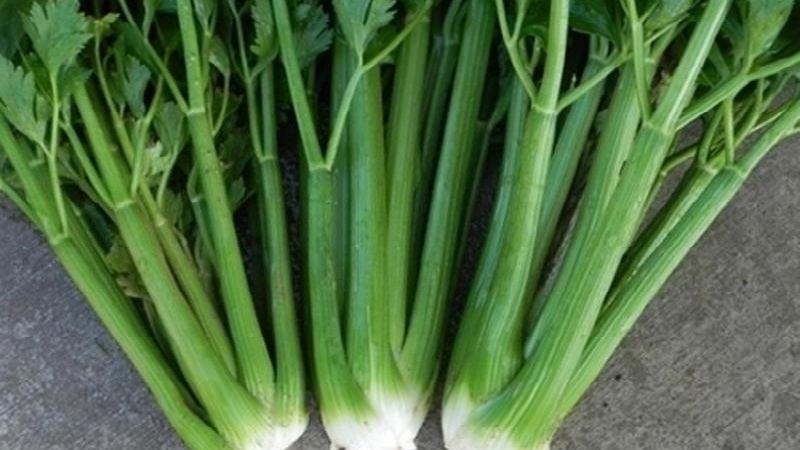
The plant has a vertical rosette with a slight bend in the stems... Petioles are slightly ribbed, up to 30 cm long, light green in color. Leaves with low gloss. Vegetable weight - about 350 g, yield - up to 3.7 kg per 1 m².
Read also:
Self-bleaching varieties and hybrids
Plants of this group love moisture and are less resistant to cold... They have a soft, rich aroma and a delicate sweetish flesh of the petioles. Stems with excellent flavoring characteristics do not need additional bleaching.
Gold
Mid-season variety ripens in 160 days... Suitable for greenhouses and open ground. It is sown in early March, transplanted into the ground at the end of May.
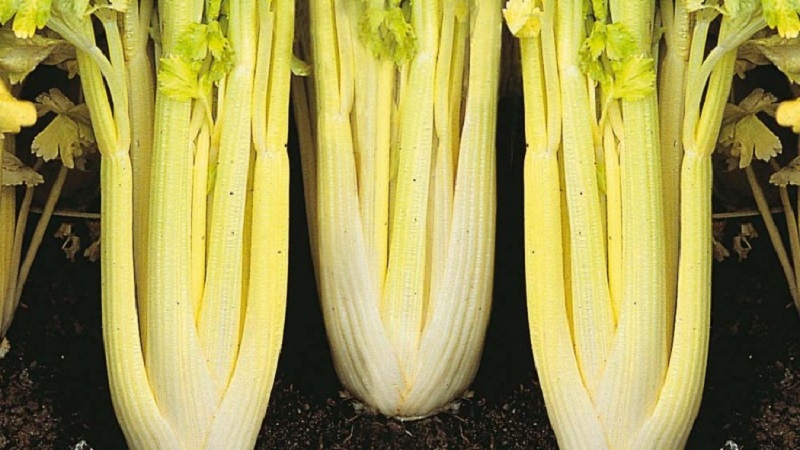
A plant with a semi-spreading rosette weighing up to 850 g... Petioles are low, firm, yellowish; the pulp is white, sweetish and juicy. The leaves are pale green in color with a glossy surface and a persistent pleasant aroma. Productivity - up to 5 kg / m².
Malachite
An early ripening variety with a ripening period of 80 to 90 days develops well in conditions of high humidity, resistant to cold. It is sown by the end of February, the seedlings are transplanted at the end of April.
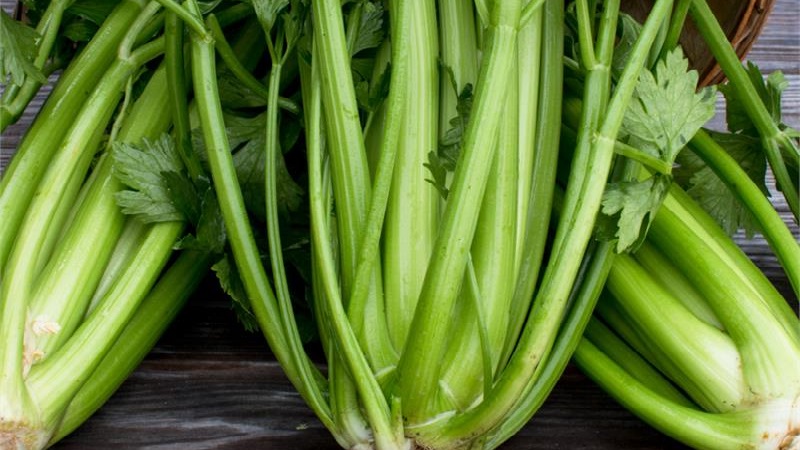
A plant with a large rosette of thick, slightly ribbed stems, weighing up to 1.2 kg... The smell is spicy, the taste is good. Productivity - up to 4 kg / m².
Important! Celery, which grows in shady, cool places, tastes better.
Tango
Hybrid with an average ripening period - 160-180 days - hygrophilous and resistant to cold weather. Seeds are sown in the last decade of February. Seedlings are transplanted into open ground in early May.
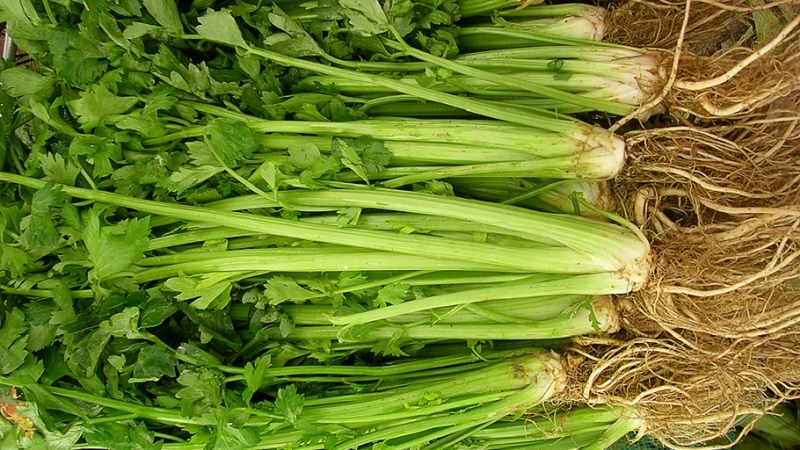
The rosette of the Tango stalked celery is formed from erect stems with a strong internal curvature... Plant weight reaches 1 kg. The petioles are large and fleshy, bluish-green in color. The pulp is tender, without fibers, high aroma. About 4 kg of greens are collected from 1 m².
Conclusion
In northern regions with short summers, it is more expedient to grow a petioled celery species. Early and mid-season plants that are resistant to cold weather are suitable for such regions. In the southern regions and the middle lane, green and self-bleaching varieties and hybrids with any ripening period are planted. The above ones are distinguished by good taste, high yield and versatility in application.